Continuing from the previous article, this piece will introduce another 10 must-visit places in Taipei, including Taiwan’s distinctive night markets, natural experiences amidst Taipei’s surrounding mountains and forests, and the coastal charm.
11. Ximending
The place name of Ximending comes from the Japanese colonial era. At that time, most residents lived inside Taipei City, and the Ximending area was their leisure spot. In the early days, Ximending was mainly focused on the film industry. After the Nationalist government relocated to Taiwan in 1949, department stores and other entertainment venues sprung up like mushrooms, making it the largest entertainment center of that time. However, it later declined with the rise of the Eastern district in Taipei.
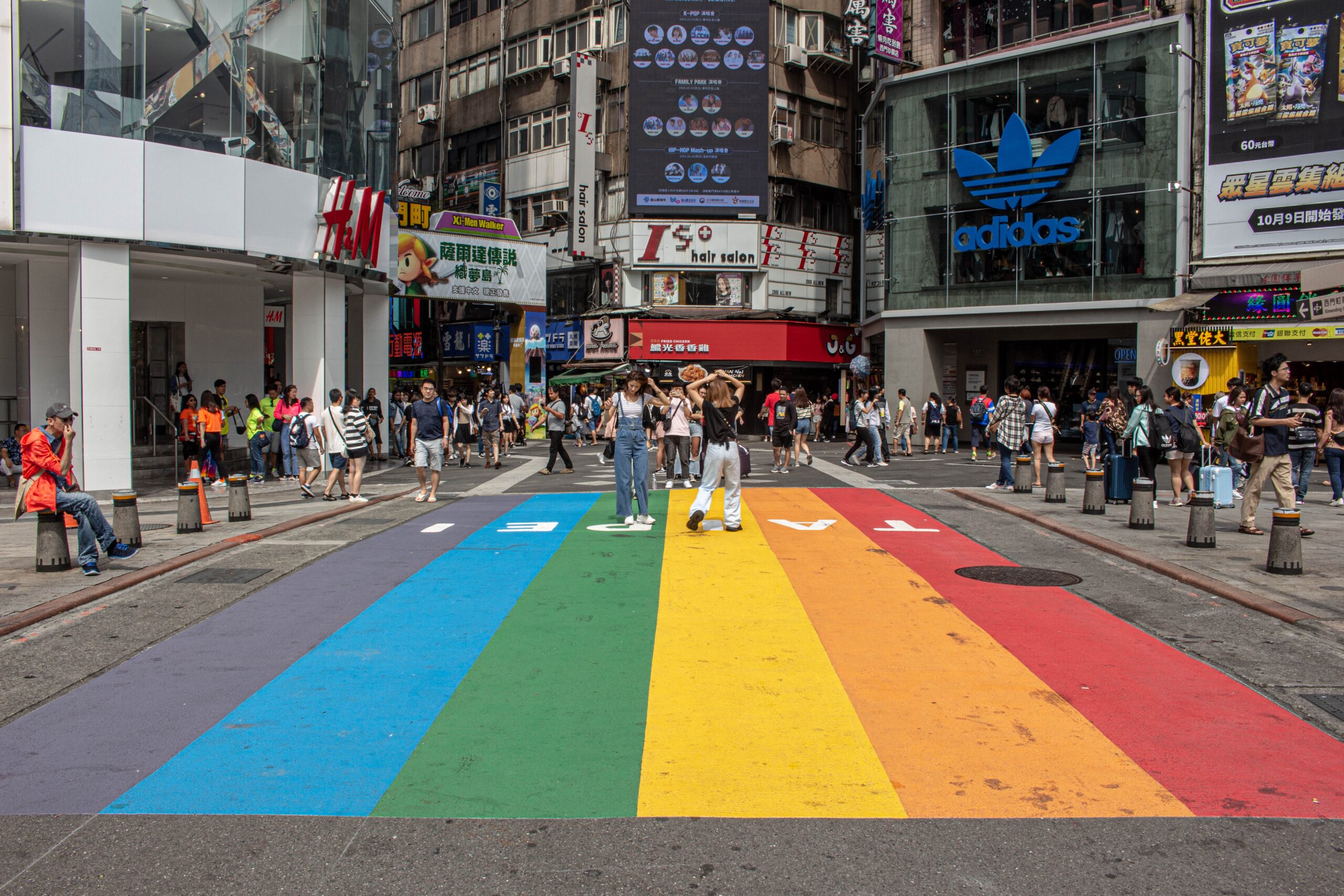
Source: Unsplash
In recent years, with the construction of the Taipei Metro Bannan Line, Ximending has gradually regained its popularity. The Taipei City government has planned a series of revitalization activities and pedestrian zones. Ximending often hosts markets and music performances on weekends, attracting young people to gather there.
The iconic Red House building in Ximending was completed in 1907. During the Japanese colonial period, it was a market where the Japanese conducted trade. After 1945, it was converted into a theater, showcasing popular performances such as Peking opera, Yue opera, and cross talk. In 2000, a major fire damaged the surrounding illegal buildings and a significant part of the Red House’s Cross Theater. In 2002, under the management of the Paper Windmill Theater Company, the Red House underwent a comprehensive renovation and reopened as the Red House Theater. The first floor now houses a café and boutique shops, while the second floor hosts regular cultural and artistic events. In 2007, the Ximending Creative Market was established, organizing themed markets in alignment with Taiwan’s festivals, allowing Taiwanese creative design brands to settle in, and making the Red House a development platform for Taiwan’s cultural and creative industry professionals.


Source: Unsplash
If you long for the Asian shopping malls of 50 years ago, Wannian Building will be a must-visit place for you. In the 1970s, it was an entertainment venue featuring cinemas and an ice skating rink. Today, Wannian Building still houses numerous small shops, with around 50-60 shops on each floor, occupying approximately 10 square meters per shop. The shops are closely adjacent, offering a diverse range of products including toys, shoes, electronics, and more. The basement floor is a food court, with many beloved local eateries, including Wan Lian Sweet and Spicy (萬聯甜不辣), Jin Yuan Pork Ribs Wannian Branch (金園排骨萬年店), and don’t miss Calcutta Indian Food (加爾各答印度料理). Check this post for ultimate food guide in Ximending >>> Ultimate food guide for Ximending: Best restaurant, drink, beef noodle, Cantonese food, cafe in Ximending
Red House | Tue Wed Thu 11:00 - 20:00 Fri Sat -21:00 Sun -22:00 closed on Mon Wannian Building | 11:30 - 22:00 Mon 14:00 - 22:00 (map) Wan Lian Sweet and Spicy | 11:00 - 19:30 closed on Sun (map) Jin Yuan Pork Ribs | Sun - Thu 11:00 - 21:00 Fri & Sat 11:00 - 21:30 (map) Calcutta Indian Food | 11:30 - 14:00 & 17:00–21:30 Closed on Mon (map) 🌐 Red House webiste (✅English, Japanese, Korean)
12. Hsing-Tian Temple

Source: Shutterstock
Hsing-Tian Temple, primarily dedicated to Lord Guan, is a prominent figure in Chinese history who lived from 162 to 219 AD. Due to his unwavering loyalty and righteousness, he is revered as the Martial Saint. Additionally, his financial acumen has led to him being honored as a deity of business protection. Alongside Guan Sheng Di Jun, Liu Bei, and Zhang Fei are also enshrined, known together as the famous “Peach Garden Oath Brothers” from Chinese history.
The present location of Hsing-Tian Temple was established in 1967. Unlike other traditional temples in Taiwan, Hsing-Tian Temple’s altar is adorned only with fresh flowers and clear tea, without any other offerings. This is because Hsing-Tian Temple prohibits animal sacrifices and discourages practices such as burning joss paper, performing plays for the deities, and presenting thanksgiving gold plaques. Additionally, there are no donation boxes in front of the temple, as the temple discourages followers from offering money for incense and oil.
At Hsing-Tian Temple, visitors can experience Taiwan’s unique “shou jing 收驚” culture. In Taiwanese belief, encountering a frightening event, especially for children, might cause the soul to leave the body, leading to unstable sleep and loss of appetite. In such cases, adults often bring children to the temple for a “shou jing” ritual, where a ceremony is performed to call back the wandering soul. If you want to experience this, you can see long queues forming on both sides of the main hall after 11:20 AM on regular weekdays, indicating the preparation for the “shou jing” ritual.
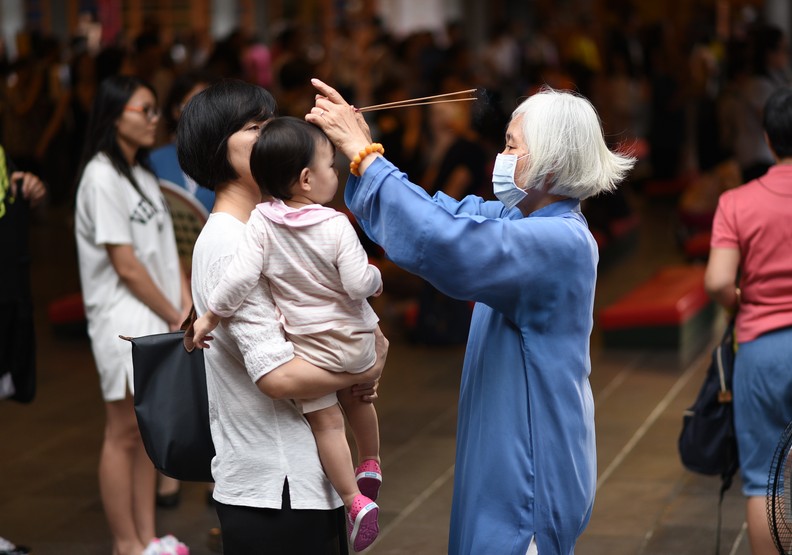
Source: 遠見
Hsing-Tian Temple is widely regarded as efficacious, attracting many people seeking divine guidance and divination. As a result, the underground shopping area near the temple is nearly filled with fortune-telling stalls, creating a distinctive characteristic of the temple’s surroundings.
Hsing-Tian Temple | 4:00 - 22:00 (map) shou jing 收驚 | 11:20 - 18:30 may change 🌐 Website (✅English, Japanese)
13. Shilin Night Market
Shilin Night Market is one of the largest and most famous night markets in Taipei. It’s a hub for a wide variety of Taiwanese street food, centered around the Yangming Theater and Cicheng Temple. The market spans streets like Wenlin Road, Dadao Road, and Danan Road. The prices of the night market snacks are affordable. Here are a few classic food recommendations:
Zhong Cheng Hao Oyster Omelette: Fresh oysters are mixed with vegetables and batter, then fried on a griddle. They are served with a savory sauce.
Hai You Shi Quan Pork Ribs: Recommended by the Michelin Bib Gourmand, these pork ribs are prepared by stewing with fifteen types of Chinese herbs for six hours. The result is tender and flavorful ribs, particularly comforting in winter.
Shilin Hao Da Da Chicken Cutlet: Known for its generous portions, this stall offers a variety of fried chicken cutlets.
Zhong Family’s Shanghai Sheng Jian Bao: Also recommended by the Michelin Bib Gourmand, these small pan-fried buns are crispy on the outside and filled with a choice of cabbage or pork on the inside.
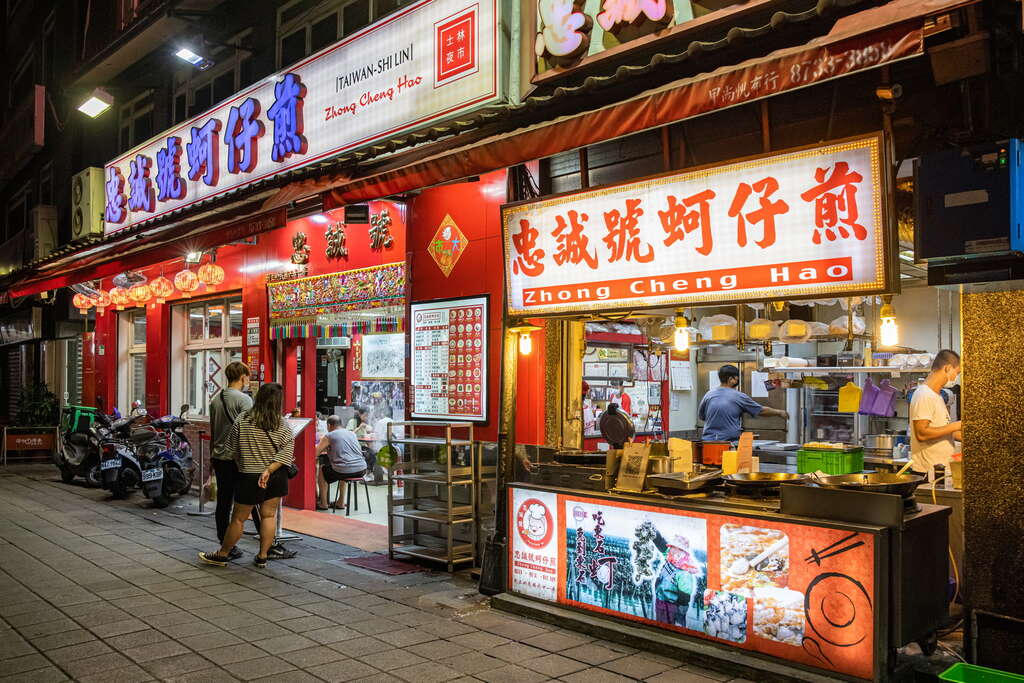
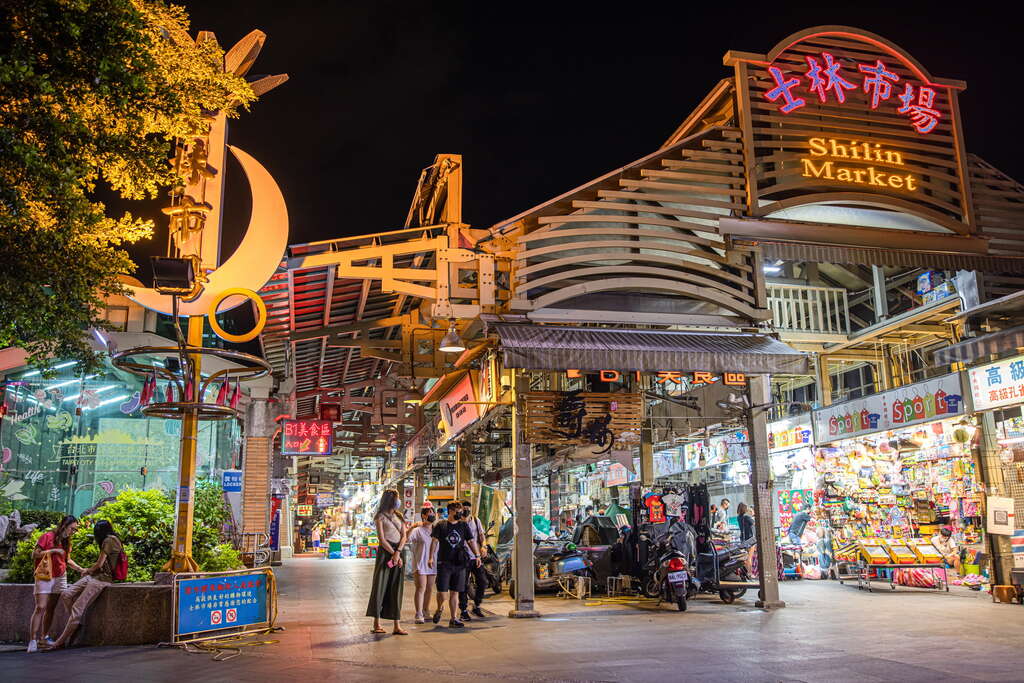
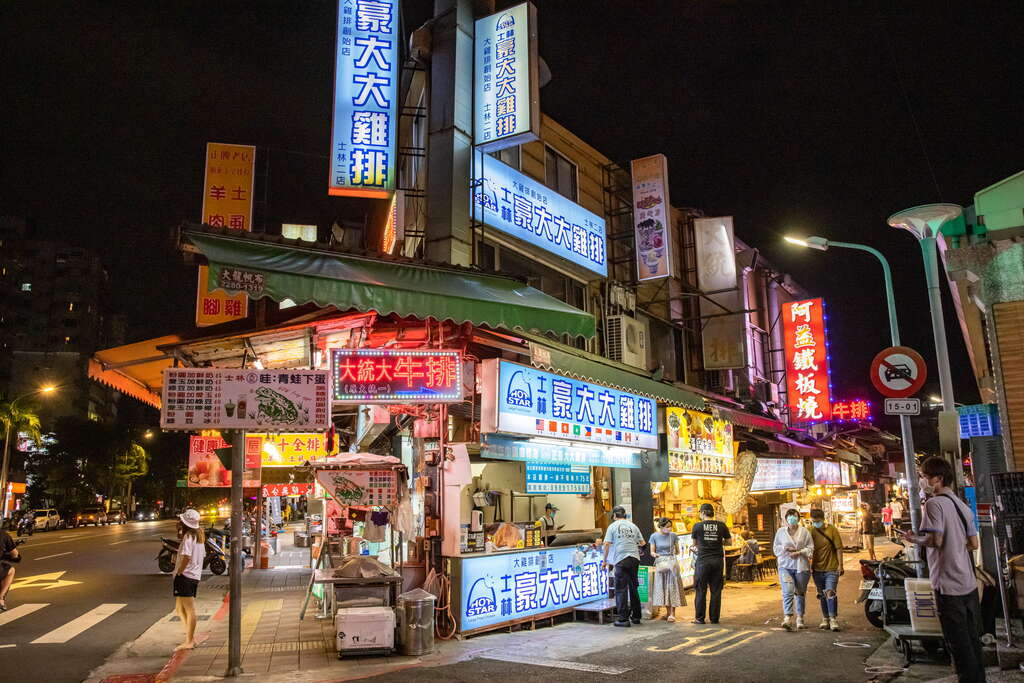
Source : Department of Information and Tourism, Taipei City Government
Shilin Night Market offers a plethora of delicious food options. A future article will provide more detailed introductions. You can reach the market conveniently by taking the MRT Red Line to either Shilin Station or Jiantan Station.
Zhong Cheng Hao Oyster Omelette | Mon - Fri 16:00 - 1:00 Sat - Sun 15:00 - 1:00 (map) Hai You Shi Quan Pork Ribs | 15:00 - 00:00 Closed on Tue (map) Shilin Hao Da Da Chicken Cutlet | 15:00 - 00:00 (map) Zhong Family's Shanghai Sheng Jian Bao | Sat - Mon 14:30 - 21:00 Tue Thu Fri 15:00 - 22:00 closed on Wed (map)
14. Raohe Street Tourist Night Market
Another must-visit night market in Taipei is Raohe Street Night Market, located on Raohe Street between Section 4, Bade Road, and Fuyuan Street in the Songshan District. In its early days, Raohe Street prospered due to the deep waters of the Keelung River, which facilitated water transportation and vibrant commercial activities between Raohe Street and Songshan Train Station. Over time, the riverbed silted up, leading to decreased ship traffic and a decline in business operations. In 1987, it was developed into a 500-meter-long night market, becoming Taipei’s second tourist night market.

Source: Unsplash / Vernon Raineil Cenzon
Stretching approximately 600 meters, Raohe Street Night Market features illuminated archways at the entrances located on Fuyuan Street and in front of Songshan Train Station. These archways mark the beginning of the bustling night market area. One of the most sought-after stalls near the entrance is the Michelin Bib Gourmand-awarded Fuzhou Shizu Pepper Bun. Freshly baked, the pepper bun boasts a crispy crust, juicy pork filling, and a rich aroma of pepper—a definite must-try at Raohe Night Market. Other must-try delicacies include Hou Zhuang Pork Flake Noodles, Chen Dong Medicinal Stewed Pork Ribs, and Mochi Babies. This night market has a high density of Michelin recommendations, and I’ll be sharing a detailed guide in a future post.
Fuzhou Shizu Pepper Bun | 15:30 - 23:00 (map) Hou Zhuang Pork Flake Noodles | 11:00 - 00:30 (map) Chen Dong Medicinal Stewed Pork Ribs | 16:30 - 23:00 (map) Mochi Babies | 16:00 - 00:00 closed on Mon & Tue (map) 🚌 MRT Songshan station Exit 5 (green line)
15. Maokong
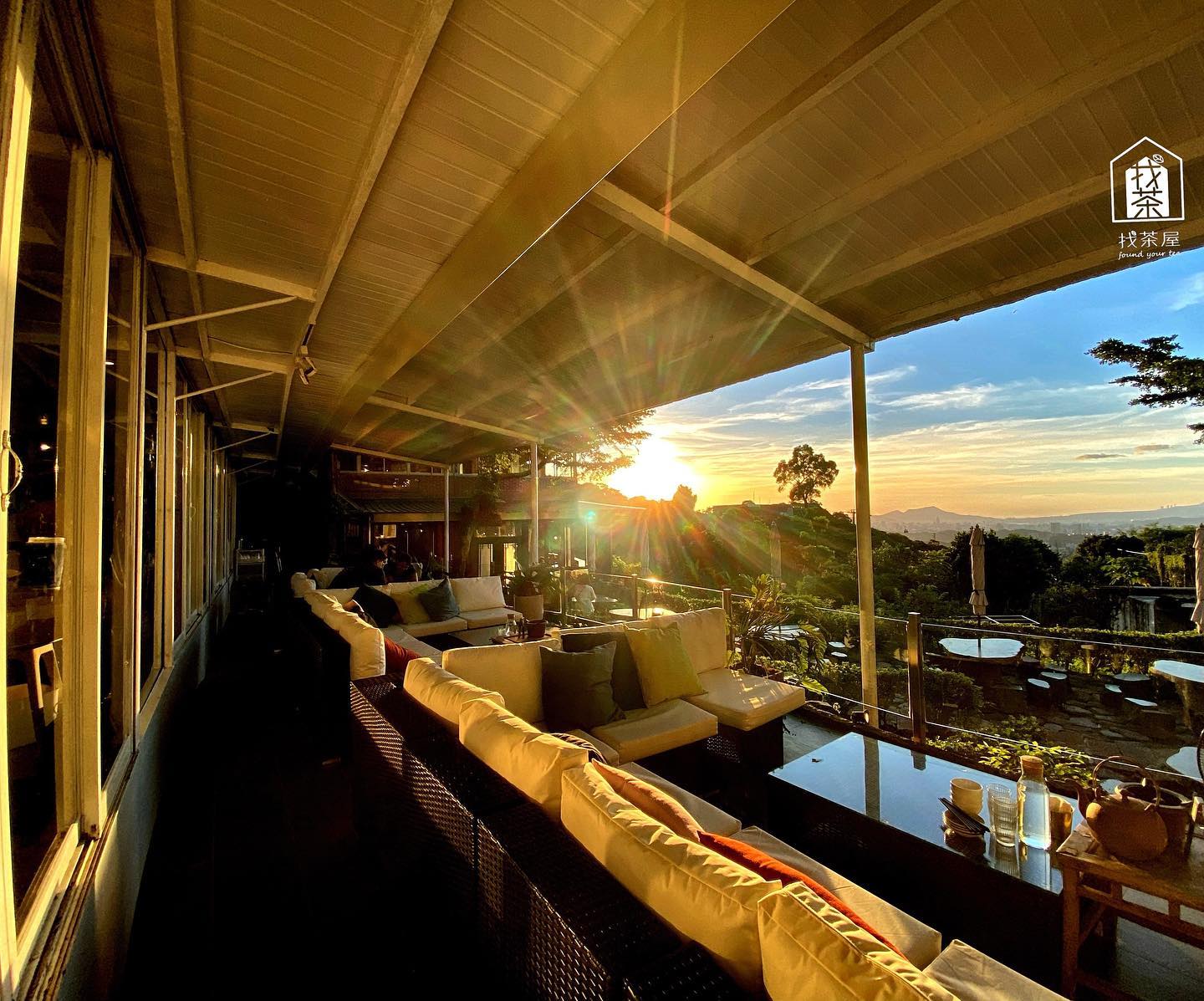
Source: Maokong Found your tea cafe
Nestled in the hills of Taipei, Maokong is one of the largest tea-producing areas in the city, renowned for its Baozhong tea and Tie Guan Yin. Due to its elevated location, it offers a sweeping panoramic view of Taipei’s landscape. This has led to the establishment of numerous scenic tea houses, attracting crowds on weekends who come to sip tea while enjoying the vista. Many restaurants also incorporate tea into their dishes, resulting in unique tea-infused cuisines. For instance, tea leaves are added to chicken soup, infusing the broth with a subtle tea aroma, effectively cutting through the richness and adding an extra layer of fragrance.
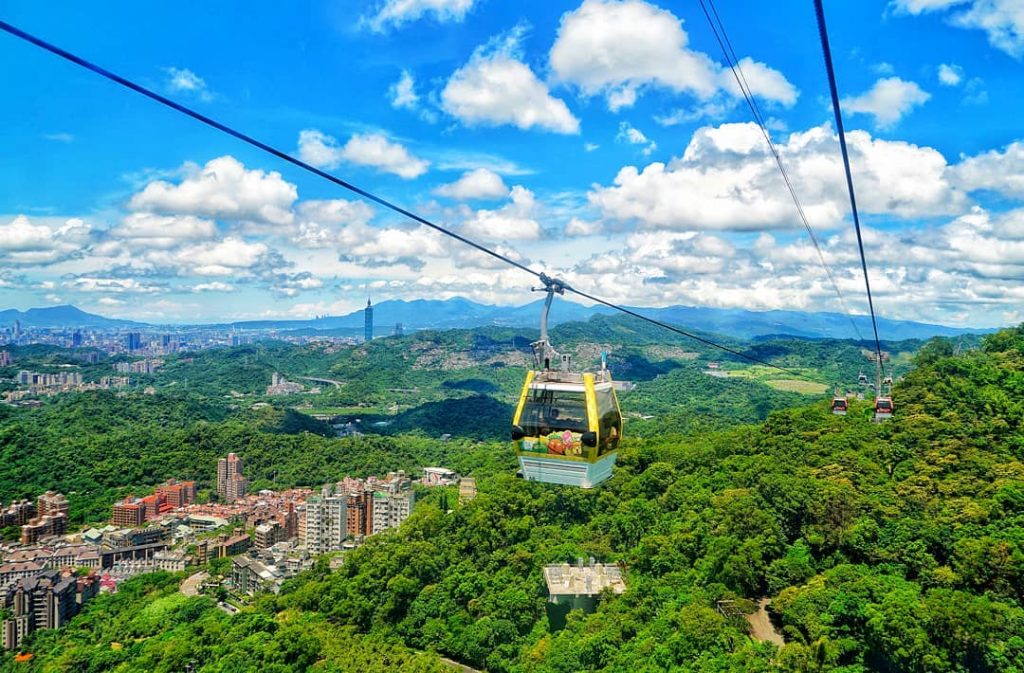
Source: Instagram @auroralin_photography
Maokong’s accessibility, coupled with its hiking trails during the day and cityscape views at night, makes it a bustling hub on weekends. To reach Maokong, you have options like the gondola, buses, and taxis. Our top recommendation is the gondola. After taking the MRT to the Zoo Station, you can transfer to the gondola. During the day journey, you’ll be treated to sweeping vistas of Maokong’s lush mountains. The one-way fare is 120 NT dollars, and you can conveniently use an EasyCard for payment.
Maokong gondola ⏰ Weekdays 9:00 - 21:00 Weekends 9:00 - 22:00 🎫 NT$ 300 (online purchase) 🌐 Website (✅English ✅Spanish ✅Japanese ✅German ✅French and more)
16. Yangmingshan National Park
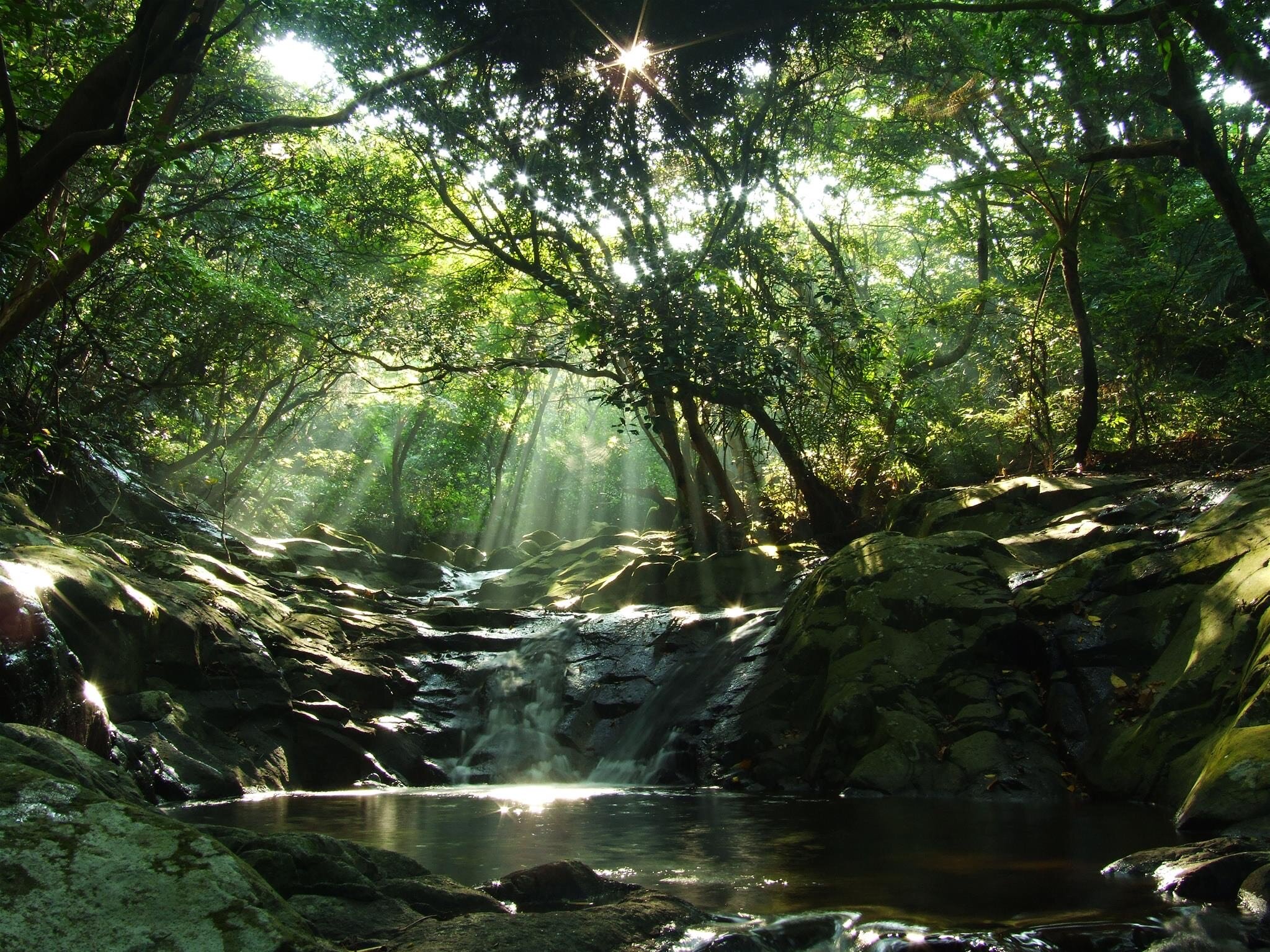
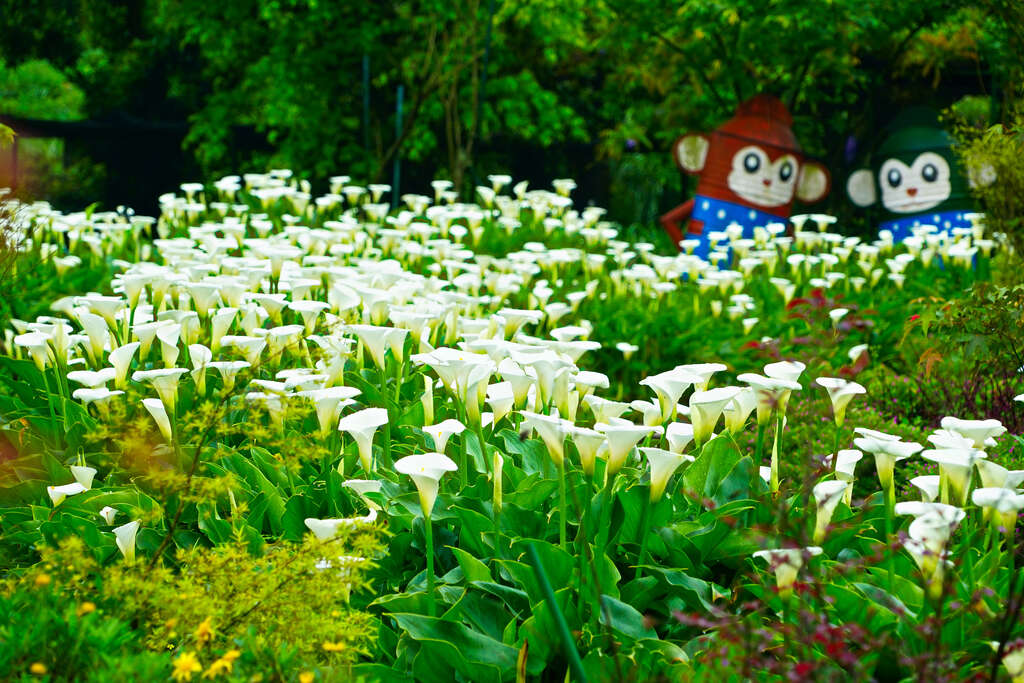
Source: QuietParks.org (left), Taipei Tourism Bureau (right)
Yangmingshan National Park is the closest national park to Taiwan’s urban area. This ecologically rich park nurtures many precious conservation-worthy animals. If you’re lucky, you might even spot the elusive Formosan Blue Magpie, a unique bird species native to Taiwan.
The park is adorned with a variety of flowers, including plum blossoms, cherries, peaches, apricots, azaleas, and camellias. Every spring, the cherry blossoms bloom, drawing crowds to the mountains for flower appreciation. Following the cherry blossom season, around mid-March, calla lilies in Bamboo Lake flourish, providing an opportunity for flower picking. You can take home a bundle of calla lilies. In autumn, the vibrant maple leaves become a visual treat. Moreover, due to the volcanic activity in the park, visitors are attracted to its unique sulfur hot springs during winter.

Source: Yangmingshan National Park
One of the park’s highlights is the Flower Clock, composed of various seasonal flowers. When spring arrives in Yangmingshan, you must capture a photo here! Besides the Flower Clock, Yangmingshan offers attractions like Xiaoyoukeng, where you can observe a volcanic crater up close, Yangmingshuwu, the largest residence of Chiang Kai-shek, and Qingshan Grassland. If you’re a fan of hiking and enjoying nature, a visit to Yangmingshan National Park is an absolute must.
Yangmingshan National Park 🚌 Yangmingshan → Taipei Station | Bus S260 🌐 Website (✅English ✅Japanese)
17. Beitou
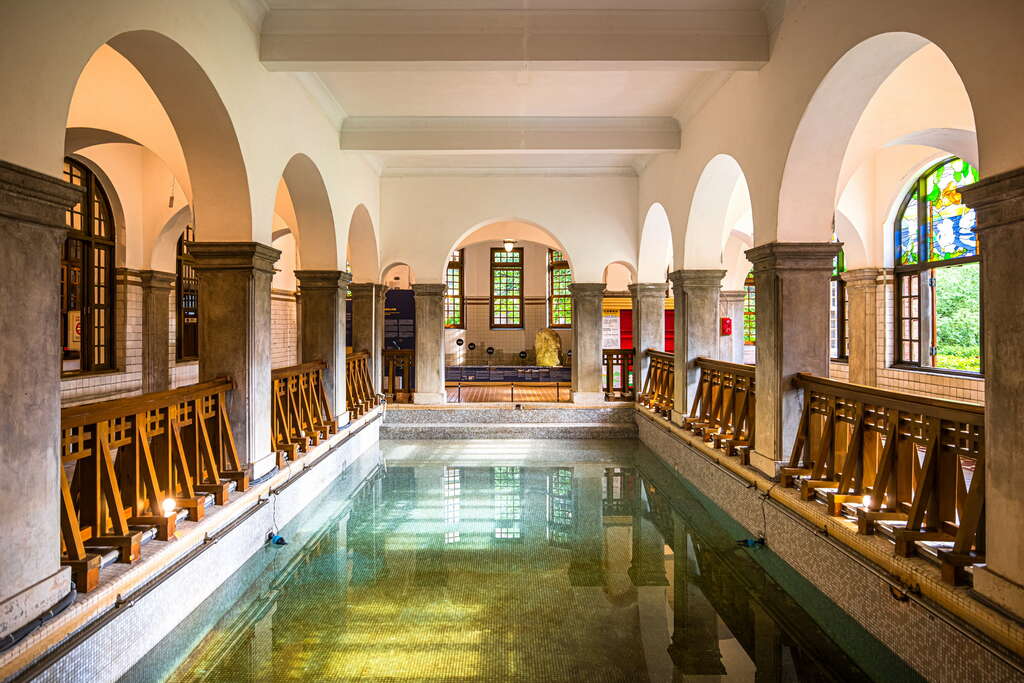
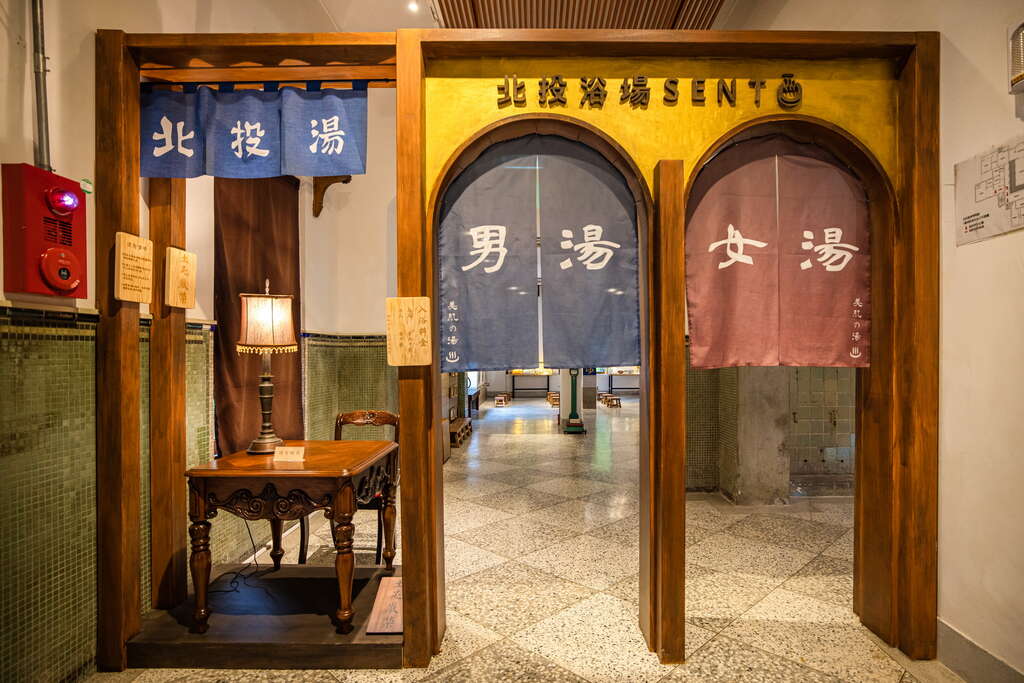
Source: Department of Information and Tourism, Taipei City Government
Beitou, renowned for its abundant sulfur deposits, gained its reputation as a hotbed of hot springs back in 1896 when the Japanese established Taiwan’s very first hot spring resort here. Since the era of Japanese rule, Beitou’s hot spring industry has thrived, cementing its prominent status.
A visit to Beitou’s Hot Spring Museum provides a captivating glimpse into the public bathhouse culture of the Japanese colonial period. Many of the bathhouse structures have been meticulously preserved, offering a window into Beitou’s architectural and cultural heritage.
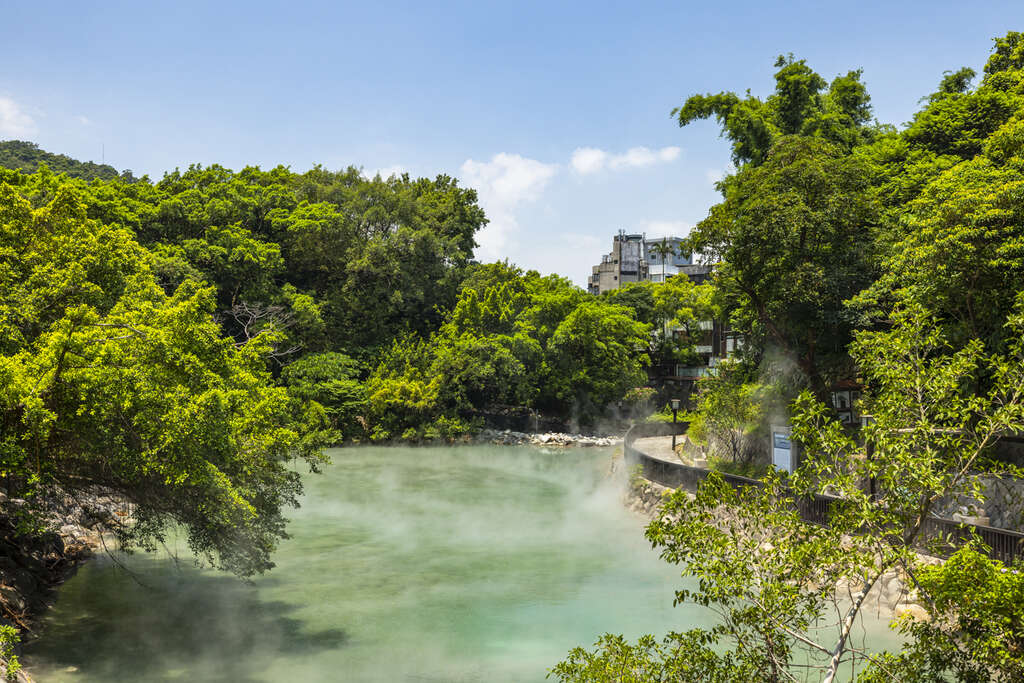
Source: Department of Information and Tourism, Taipei City Government
Heading uphill toward Beitou Park, you’ll find the perennially mist-shrouded Thermal Valley Park, the birthplace of Beitou’s hot springs. The air carries a pungent sulfur scent, and the spring water reaches scalding temperatures of 90 to 100 degrees Celsius, with an astonishingly low pH level of 1.6, making it highly acidic. With well-constructed boardwalks in place, visitors have the opportunity for an up-close encounter with the source of these rejuvenating hot springs.
Additionally, the Beitou Library is a must-visit destination. Crafted from wood, its striking exterior is complemented by a green roof and sloped grassy terrain designed for moisture retention, natural drainage into rainwater collection tanks, and subsequent reuse for plant irrigation and toilet flushing. These eco-friendly features have earned Beitou Library numerous architectural accolades.

Source: Department of Information and Tourism, Taipei City Government
If you find yourself in Taipei during the winter months, we wholeheartedly recommend planning a day trip to Beitou to immerse yourself in the therapeutic embrace of its hot springs!
Checkout our dedicated posts to Beitou:
👉 A Local’s Complete Guide to Beitou Travel
👉 One Day Beitou Itinerary – Most Optimized Route to See Everything
👉 Beitou Hot Spring Recommendations: 7 Best Hot Springs that will Cleanse Your Spirit
👉 What to Eat in Beitou: Best Food and Restaurant Recommendations
Hot Spring Museum (map) ⏰ 10:00 - 18:00 closed on Mon 🌐 website (✅English ✅Japanese) Thermal Valley Park (map) ⏰ 24/7 open Beitou Library (map) ⏰ Tue - Sat 8:30 - 21:00 Sun & Mon 9:00 - 17:00
18. Xiangshan (Elephant Moutain)
Take the MRT to Xiangshan Station, and follow the signs along the way to reach the trailhead for Xiangshan (Elephant Mountain). Xiangshan is one of Taipei’s Four Beasts Mountains, and despite its elevation of just over 100 meters, it offers one of the best vantage points to admire Taipei 101. During the New Year, Taipei 101 hosts a dazzling fireworks display, drawing crowds of spectators to Xiangshan. If you’re looking to plan a day trip near Taipei 101 and want to get closer to nature, hiking up Xiangshan is an excellent choice.

Source: Department of Information and Tourism, Taipei City Government
🚌 MRT Xiangshan station (Exit 2)
19. Tamsui
Located in the northern part of Taipei, Tamsui is situated near the mouth of the Tamsui River. It was once the largest port in the Taipei area, although the number of ships docking here has diminished over the years. Nevertheless, the historic and culturally rich streets of Tamsui continue to attract countless visitors each year.
One of Tamsui’s most famous landmarks is the Red Fort, originally dating back to 1624 when it was built by the Spanish as San Domingo Fort. It was later reconstructed on the same site in 1644 by the Dutch, becoming the Red Fort we see today. It once served as the British Consulate and is now open to visitors, making it one of Taiwan’s earliest architectural structures. Adjacent to it is the Little White House, built in 1864, featuring typical colonial-style architecture with a Spanish gallery structure. During the Qing Dynasty, it served as the official residence of the Tamsui Customs Superintendent.
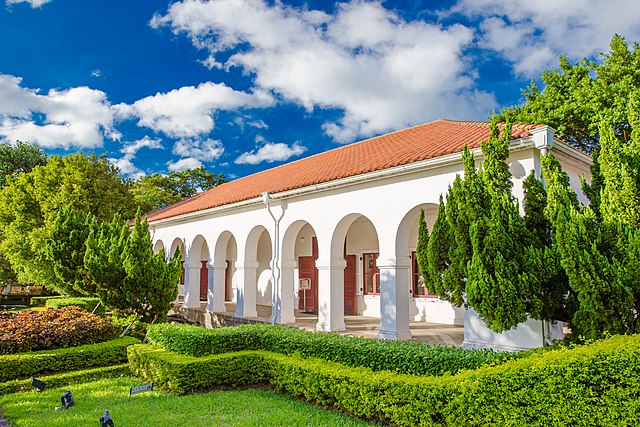
Source: Wikipedia
In addition to these historic buildings, Tamsui Old Street is bustling with activity and offers a wide array of delicious cuisine for you to savor. Don’t miss out on trying Tamsui’s famous A-Gei, Grandma’s Iron Eggs, and handmade fish ball soup. In the evening, make sure to head to Tamsui Fisherman’s Wharf to witness the beautiful sunset, and you can even take a ferry ride to explore the mouth of the Tamsui River! To buy a ferry ticket, we recommend Klook.
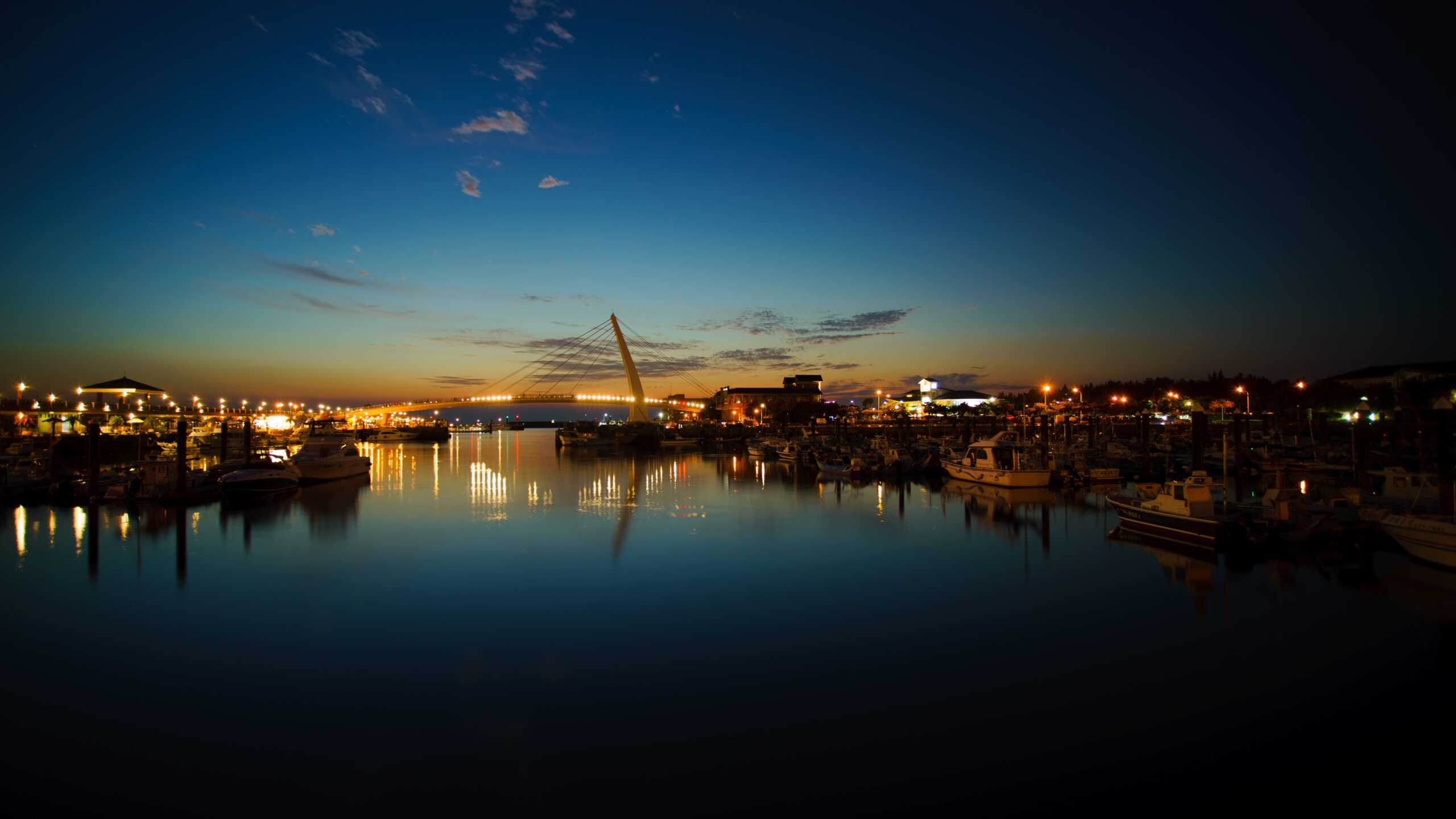
Source: Unsplash / W T
Red fort | Mon - Fri 9:30 - 17:00 Sat & Sun 9:30 - 18:00 (map) Little White House | Mon - Fri 9:30 - 17:00 Sat & Sun 9:30 - 18:00 (map) Ferry (Fisherman’s Wharf ⇋ Old Street) | NT$ 60 (one way) Klook 🚌 MRT Tamsui station
20. National Taiwan Science Education Center
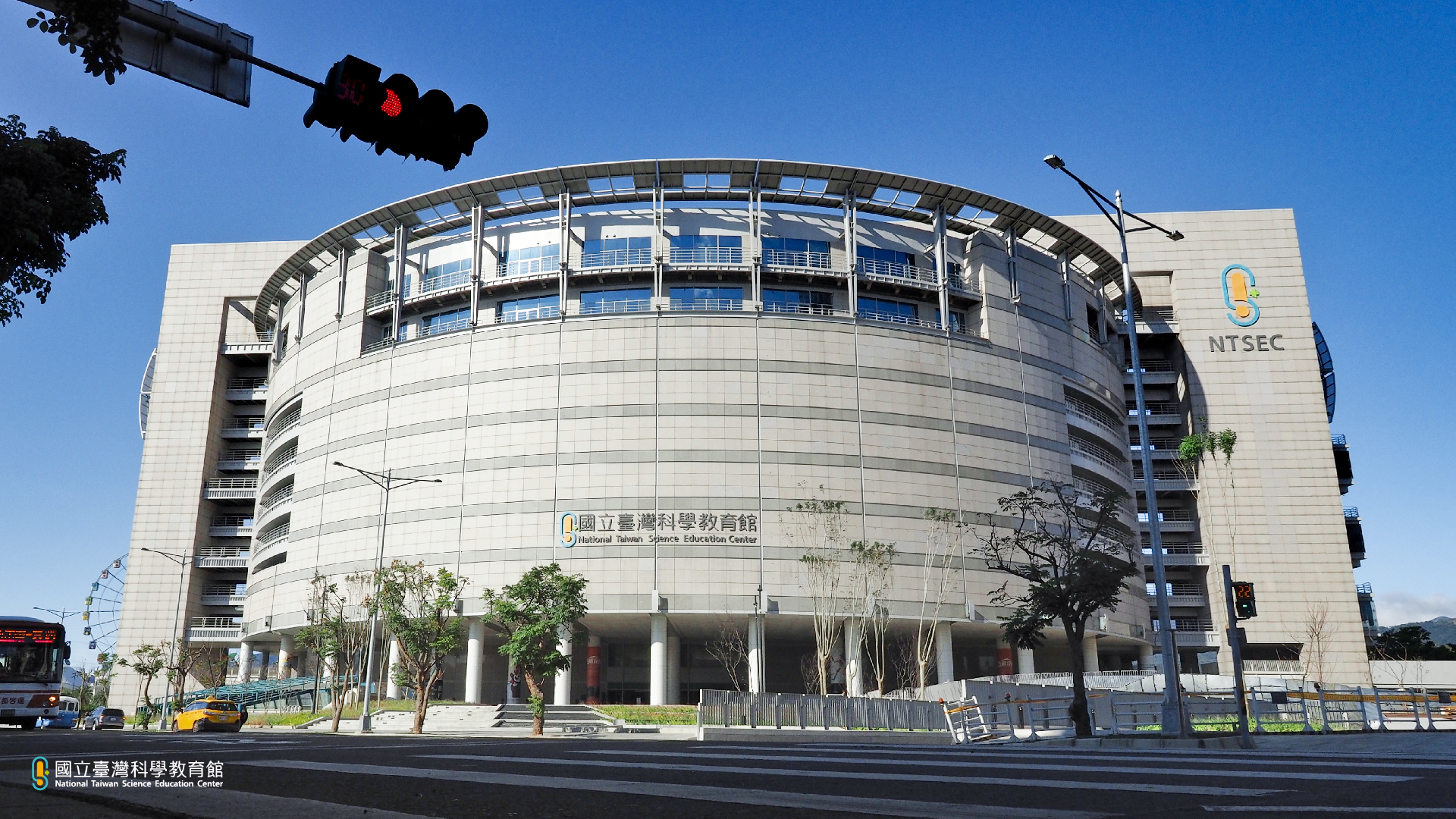
Source: National Taiwan Science Education Center
If you’re traveling with kids or have a keen interest in science, I recommend visiting the National Taiwan Science Education Center. In its permanent exhibitions, you’ll find a plethora of interactive equipment that allows you to get hands-on with science. There’s even a suspended bicycle that offers the thrilling experience of cycling high above the ground.
In addition to the permanent exhibits, there are also occasional special exhibitions, such as haunted house displays, semiconductor exhibitions, Tutankhamun exhibits, and the ever-popular 3D theater. With 3D glasses on, the seats move in sync with the film, providing a sensation of riding a roller coaster through volcanoes or experiencing the ground-shaking footsteps of dinosaurs from the Jurassic era.
🚌 MRT Jiantan station ➞ Bus R30 / 4 / 8 🚌 MRT Shilin station ➞ Bus R30 / R12 / 557 🌐 website (✅English)
The above list covers 10 must-visit places in Taipei. If you haven’t read the first part, you can click here to check out our recommendations for another 10 must-visit places in Taipei. If you also have your recommendation which we did not mention, please feel free to name it in your comment and share with others!

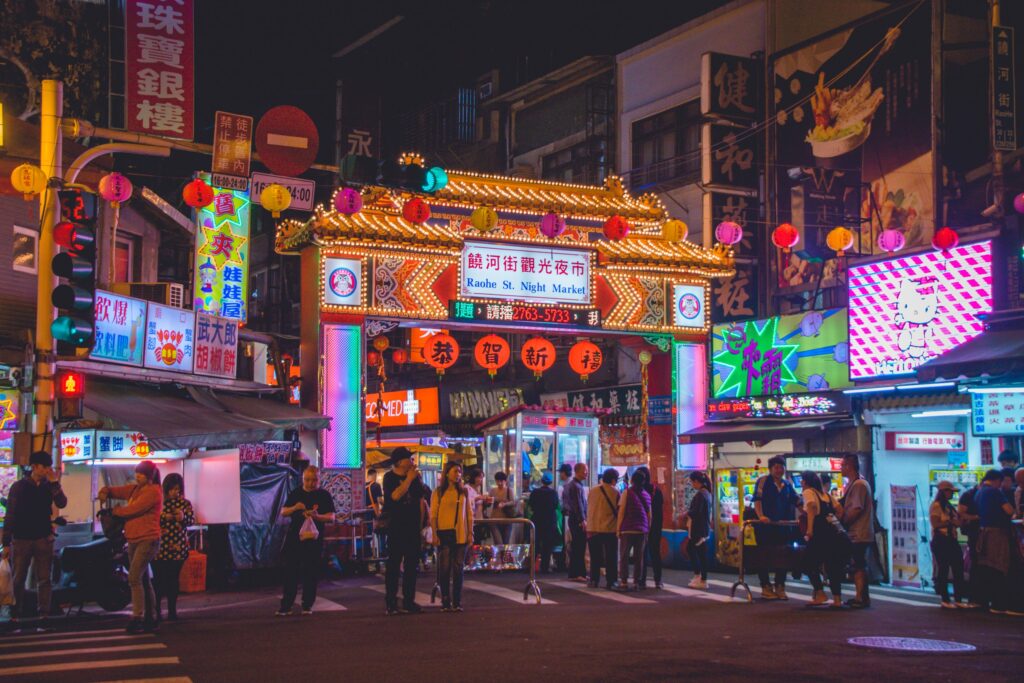
1 Comment
Pingback: 20 Places You Must Visit in Taipei 2023 – part 1 – Blue Canoe